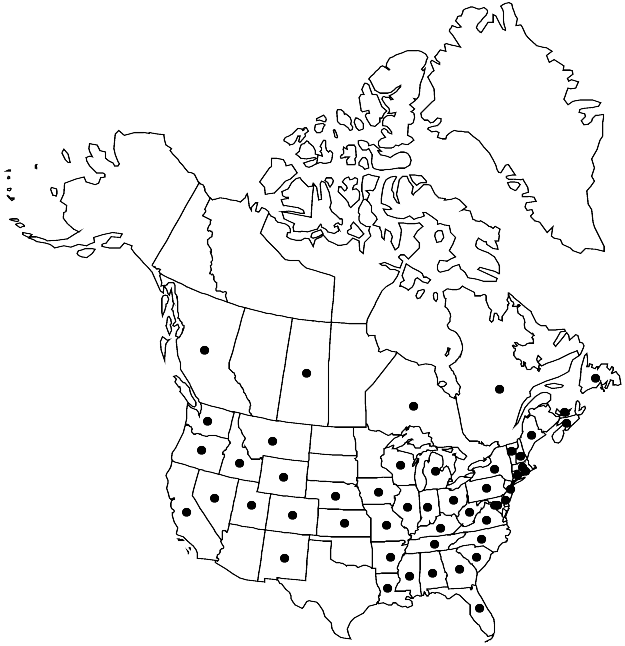Lepidium campestre
in W. Aiton and W. T. Aiton, Hortus Kew. 4: 88. 1812.
Annuals; densely hirsute. Stems simple from base, erect, unbranched or branched distally, (0.8–) 1.2–5 (–6.3) dm. Basal leaves rosulate; petiole (0.5–) 1.5–6 cm; blade oblanceolate or oblong, (1–) 2–6 (–8) cm × 5–15 mm, margins entire, lyrate, or pinnatifid. Cauline leaves sessile; oblong, lanceolate, or narrowly deltate-lanceolate, (0.7–) 1–4 (–6.5) cm × (2–) 5–10 (–15) mm, base sagittate or auriculate, margins dentate or subentire. Racemes much-elongated in fruit; rachis hirsute, trichomes spreading, straight. Fruiting pedicels horizontal, straight or slightly recurved, (terete), (3–) 4–8 (–10) × 0.3–0.4 mm, hirsute. Flowers: sepals oblong, (1–) 1.3–1.8 × 0.6–0.8 mm; petals white, spatulate, (1.5–) 1.8–2.5 (–3) × (0.2–) 0.5–0.7 mm, claw 0.6–1 mm; stamens 6; filaments (1.2–) 1.5–1.8 (–2) mm, (glabrous); anthers 0.3–0.5 mm. Fruits broadly oblong to ovate, (4–) 5–6 (–6.5) × (3–) 4–5 mm, (curved adaxially), apically broadly winged, apical notch (0.2–) 0.4–0.6 mm deep; valves thin, papillate except for wing, not veined; style 0.2–0.5 (–0.7) mm, slightly exserted beyond, or included in, apical notch. Seeds (dark-brown), ovoid, 2–2.3 (–2.8) × 1–1.4 mm. 2n = 16.
Phenology: Flowering May–Jun.
Habitat: Roadside, pastures, gardens, open flats, pine woodlands, rocky slopes, forests, waste grounds, disturbed areas, meadows, fields
Elevation: 0-2600 m
Distribution

Introduced; B.C., Nfld. and Labr. (Nfld.), N.S., Ont., P.E.I., Que., Sask., Ala., Ark., Calif., Colo., Conn., Del., D.C., Fla., Ga., Idaho, Ill., Ind., Iowa, Kans., Ky., La., Maine, Md., Mass., Mich., Miss., Mo., Mont., Nebr., Nev., N.H., N.J., N.Mex., N.Y., N.C., Ohio, Oreg., Pa., R.I., S.C., Tenn., Utah, Vt., Va., Wash., W.Va., Wis., Wyo., Europe, Asia, also in South America, South Africa
Discussion
Selected References
None.
Lower Taxa
"much-elongated" is not a number."thick" is not a number."dm" is not declared as a valid unit of measurement for this property."dm" is not declared as a valid unit of measurement for this property.
